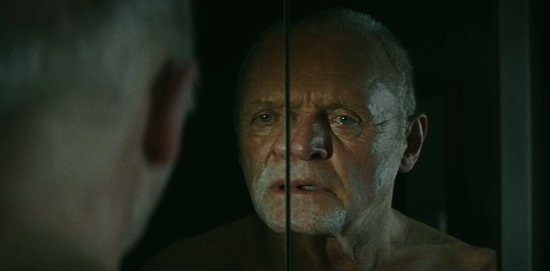
The Exorcist (1973) was geared to shock. With its pea-soup projectile vomiting, bestial soundtrack noises, revolving head, voice of Satan (Mercedes McCambridge electronically baritone-ized), vertiginous camera work, elegant Georgetown setting transformed by fog and shadows into a circle of hell, it was meant to achieve two goals. First, to stir up feelings of atavistic dread, and second, to make the viewer overlook all the stupidities in the script. As far as this viewer was concerned, the first goal was attained; the second was not. All the individual stupidities added up to one big stupidity that could be summed up by the question: Is the Devil nothing but a violent psycho?
For what did His Satanic Majesty accomplish in the story? He made the possessed little girl look ugly. He tossed an alcoholic film director out a window (did the poor sod go to hell or heaven or…?). He damaged furniture, urinated on a carpet, and spewed in people’s faces. He played havoc with the thermostat (it gets cold up there on the second floor when the Devil is in residence), and he used a lot of foul language (but no worse than that of your typical stand-up comedian). This is diabolism? Oh yes, I understood that all these stunts were meant ultimately to bring the devil face to face with the formidable exorcist Fr. Merrin (Max von Sydow), but what was the result when the antagonists finally met? The good man had a heart attack and (presumably) went straight to heaven. Even the suicide of the younger priest played by Jason Miller was hardly an unqualified success for the Devil, since it was committed only to destroy the demon the priest had taken into himself as he rescued the child. Besides, the suicide victim lived just long enough to receive a blessing from a priest friend who happened to be on the spot. If this was the best Satan could do on behalf of damnation, who needs guardian angels?
The latest demonic possession movie, The Rite, is The Exorcist for sissies. It de-zaps a genre that has nothing but zap going for it. The plot is merely a weak rehash of the 1973 story. A young seminarian (Colin O’Donoghue instead of Jason Miller) is forced to team up with a veteran priest-exorcist (Anthony Hopkins instead of Max von Sydow) to deal with two possessed children. This time even the veteran has wrestled with doubt, and his latest project’s failure leaves him open to possession. So, as in the earlier film, a junior cleric must leap into the breach. And once again, a confrontation with the Devil restores faith.
At one point, however, the screenplay (attributed to Michael Petroni) comes up with a new wrinkle. The possessed Italian girl (the setting is Rome) reveals that she is not only conscious of the demon within her but from time to time even has a sort of dialogue with it. This could have led to some real Jekyll-and-Hyde drama, with not only the clerics doing spiritual combat but with the victim participating in her own rescue. Alas, the movie soon retreats to the stale formula of exorcists praying over the possessed one, who snarls, jeers, and reveals secrets that only the Devil could know. It’s always the sign of a bad script that it gives up on its best ideas.
I’ve seen two other works by the director Mikael Håfström: Evil (made in the director’s native Sweden) and the American-made Derailed, both of them simple-minded and derivative in their storytelling, both directed with a sledgehammer. A sledgehammer was certainly the right tool for this project, but Håfström brings surprisingly little relish to it. The lighting is only perfunctorily lurid, the sound effects only slightly creepy, the special effects out of Horror 101, with the score groaning and wailing away but without the clever mixing of animal noises, whispering voices, and unsettling music that The Exorcist’s sound technicians achieved.
Why does the demonic-possession horror genre persist? Is it that movie priests are the last heroes left (in our increasingly secular pop culture) who can unashamedly aspire to virtue without seeming corny? Knights in shining armor are passé, but priests can, on occasion, wear white and evoke heaven’s powers without diffidence. And is there a special frisson in seeing innocents—and young, good-looking, female innocents at that—bedraggled with blood, disfigured by sores, and covered with spittle and vomit until the (presumably) virginal priests restore them to physical beauty as well as spiritual wholeness? Is a kind of Parzival syndrome at work here? For whatever reason, the genre will probably be with us for a long time to come.
Can it be raised to the level of art? Actually, it already has been, but not in Hollywood. In his 1987 Under the Sun of Satan (based on Georges Bernanos’s 1926 novel), director Maurice Pialat gives us, in his typically naturalistic style, a drama of a girl who, as played by Sandrine Bonnaire, seems at first no more than romantically troubled and ethically confused. But as the story proceeds and we study her through the eyes of an equally troubled priest (an unexpectedly restrained Gérard Depardieu), we come to see that she is willfully collaborating with the forces of evil. This is not possession in the sense of a spiritual invasion but a spiritual infiltration brought about by the girl’s being a careless custodian of her soul. Lest we dismiss this as mere mental derangement, Pialet actually introduces the Devil in the shape of a sullen, sly horse dealer. As for the priest who must combat him, Fr. Donissan is as physically ill and spiritually depleted as Bernanos’s later (1936) hero of Diary of a Country Priest. Still, battle is joined. No revolving heads, no lurid lighting, a very quiet soundtrack, yet this is a movie (one I hope will soon be available on DVD) that can both creep you out and, ultimately, refresh your spirit. And Maurice Pialet is an avowed atheist. Go figure.

